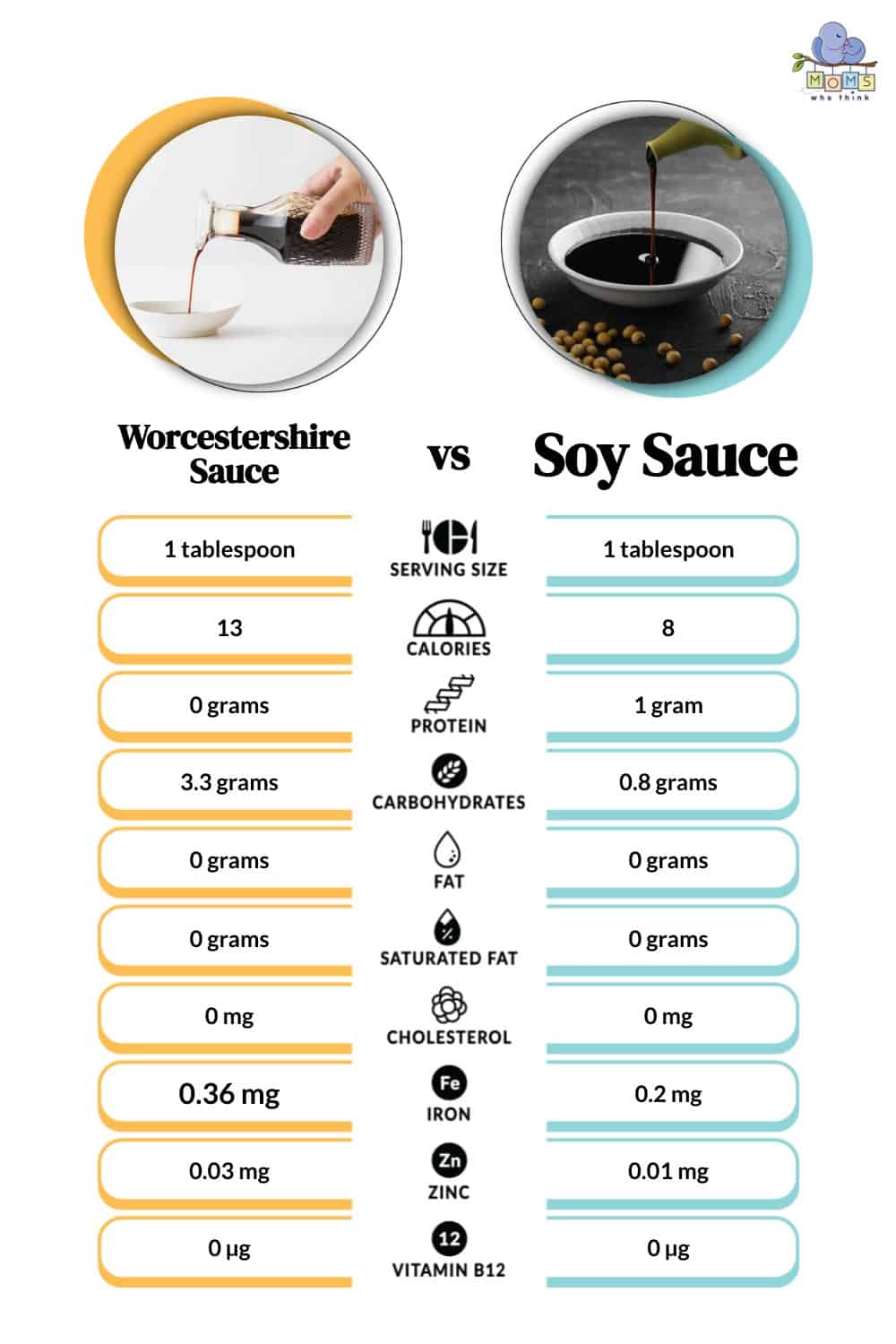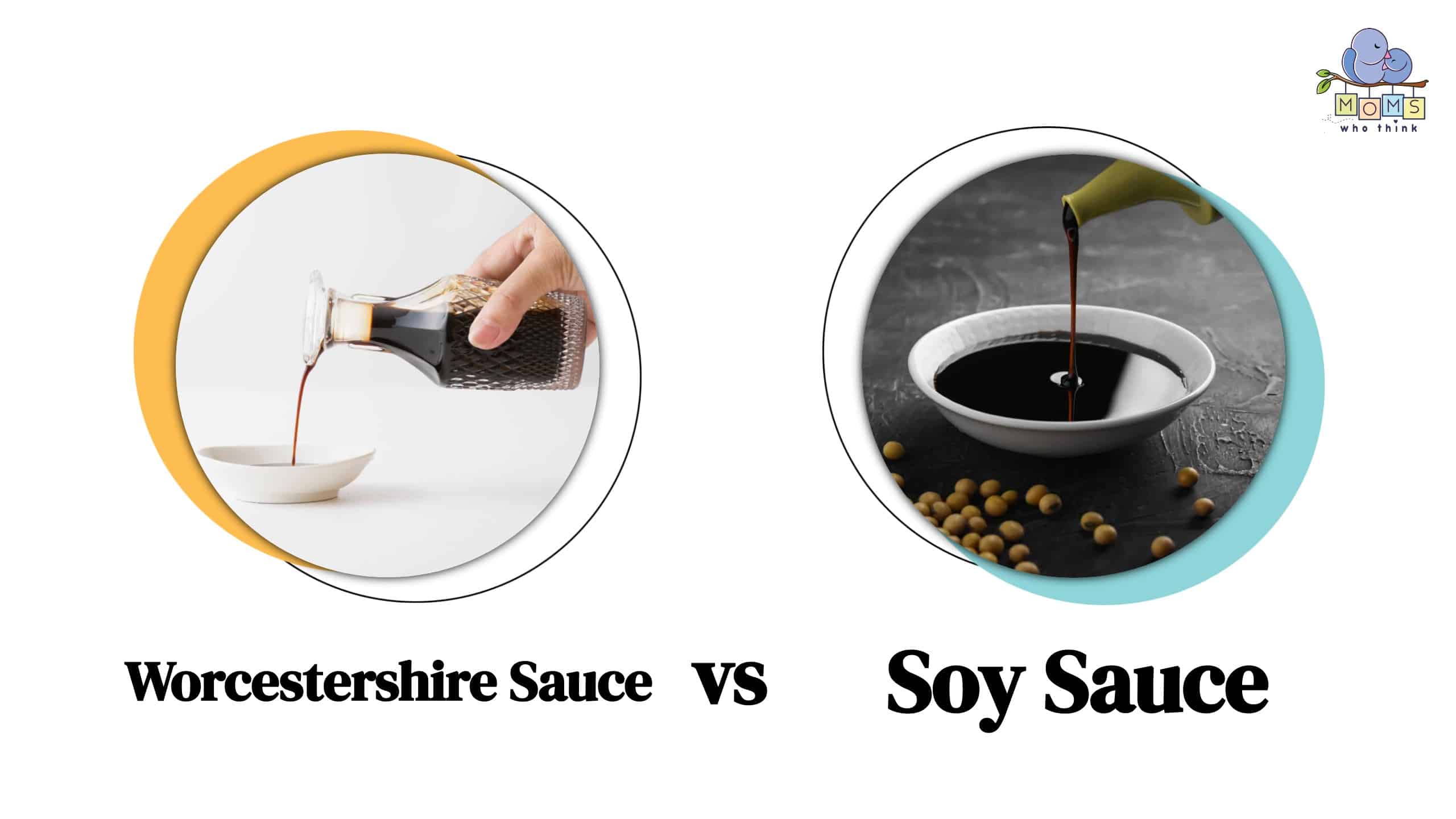When it comes to adding depth and flavor to our favorite dishes, condiments play a vital role. Among the numerous condiments available, Worcestershire sauce and soy sauce are two popular choices that have become pantry staples for many. While both sauces possess the ability to elevate the taste of various cuisines, they each bring their own unique characteristics and origins to a variety of meal plans.
In this article, we will dive into the 6 key differences between Worcestershire sauce and soy sauce, exploring their origins, flavors, ingredients, culinary uses, and nutritional values. By understanding the distinctions between these two condiments, you'll be equipped with the knowledge to make informed decisions when it comes to enhancing your culinary creations.
Whether you're a culinary enthusiast or simply curious about these versatile condiments, this article will shed light on the intriguing contrasts that make Worcestershire sauce and soy sauce stand out in the realm of flavor-enhancing ingredients. So, let's dive in and uncover the distinctive qualities that set Worcestershire sauce and soy sauce apart!
1. Worcestershire Sauce vs. Soy Sauce: Origin
Worcestershire Sauce Origin:
Also known as Worcester sauce, Worcestershire sauce originated in the city of Worcester in Worcestershire, England, during the first half of the 19th century. It was invented by pharmacists John Wheeley Lea and William Henry Perrins. The sauce was created as a fermented liquid condiment, and Lea & Perrins went on to form a company to produce and market it.
Soy Sauce Origin:
Soy sauce has a long history and is believed to have originated in China over 2,500 years ago. It is made from fermented soybeans, wheat, enzymes, and salt. Over time, soy sauce spread to other Asian countries, including Japan and Korea, where it became an integral part of their cuisines.
2. Worcestershire Sauce vs. Soy Sauce: Ingredients
Worcestershire Sauce Ingredients:
Worcestershire sauce is made from a combination of ingredients that contribute to its unique flavor. While the exact recipe may vary between brands, common ingredients found in Worcestershire sauce include:
Vinegar: Provides acidity and tanginess.
Molasses: Adds sweetness and depth of flavor.
Anchovies: Adds a savory and umami taste.
Onions: Contributes to the overall flavor profile.
Garlic: Adds a pungent and aromatic element.
Tamarind extract: Provides a tangy and slightly fruity taste.
Chili pepper extract: Adds a hint of spiciness.
Sugar: Balances the flavors and adds sweetness.
Salt: Enhances the overall taste.
These ingredients are typically fermented and aged to develop the distinct flavor of Worcestershire sauce. It is important to note that Worcestershire sauce may contain undisclosed “natural ingredients” as well.
Soy Sauce Ingredients:
Soy sauce is primarily made from fermented soybeans, wheat, enzymes, and salt. The ingredients used in soy sauce production can vary depending on the brand and type of soy sauce. Common ingredients found in soy sauce include:
Soybeans: The main ingredient, providing the base flavor.
Wheat: Helps with the fermentation process and adds depth to the taste.
Enzymes: Aid in the fermentation of soybeans and wheat.
Salt: Enhances the flavor and acts as a preservative.
The fermentation process plays a crucial role in developing the unique flavor of soy sauce. Different types of soy sauce, such as light soy sauce, dark soy sauce, and tamari, may have slight variations in their ingredient ratios and production methods.
3. Worcestershire Sauce vs. Soy Sauce: Fermentation Process
Worcestershire Sauce Fermentation Process:
Worcestershire sauce is a fermented liquid condiment. It typically undergoes a fermentation process that helps develop its distinct flavor. The fermentation may involve the interaction of various ingredients, such as anchovies, vinegar, molasses, and other flavorings depending upon the composition. The specific duration and details of the fermentation process may vary between different brands and recipes.
Soy Sauce Fermentation Process:
Soy sauce is made through a fermentation process that involves soybeans, wheat, enzymes, and salt. The process is more well-defined than Worcestershire sauce and typically includes the following steps:
Steaming and Roasting: Soybeans and wheat are steamed and roasted to prepare them for fermentation.
Koji Cultivation: The steamed soybeans and roasted wheat are mixed with a culture of Aspergillus oryzae mold, known as koji. This mold helps break down the starches into simple sugars.
Fermentation: The koji mixture is combined with brine (saltwater) and left to ferment for a period of time, usually several months to years. During fermentation, the enzymes in the koji break down the proteins and carbohydrates in the soybeans and wheat, resulting in the development of flavor compounds and the formation of amino acids.
Pressing and Filtration: After fermentation, the mixture is pressed to extract the liquid, which is then filtered to remove any solids.
Pasteurization and Aging: The filtered liquid is pasteurized to stop the fermentation process and ensure food safety. Some soy sauces may undergo additional aging to further develop their flavor.
4. Worcestershire Sauce vs. Soy Sauce: Flavor
Worcestershire Sauce Flavor:
Known for its tangy, savory, and slightly sweet taste with a hint of umami, Worcestershire sauce has a distinct and complex flavor profile. It is The sauce gets its unique flavor from a combination of ingredients such as vinegar, molasses, anchovies, garlic, tamarind extract, chili pepper extract, sugar, and salt. Worcestershire sauce adds depth and richness to dishes, making it a popular choice for enhancing the flavor of various recipes.
Soy Sauce Flavor:
Soy sauce is characterized by its salty and slightly sweet taste with rich umami notes. It is made from fermented soybeans, wheat, enzymes, and salt. The fermentation process contributes to the development of its distinct flavor. Soy sauce is a versatile condiment that adds depth and savory flavor to a wide range of dishes, particularly in Asian cuisines. It is commonly used as a seasoning, dipping sauce, and ingredient in stir-fries, noodles, sushi, and many other recipes.
5. Worcestershire Sauce vs. Soy Sauce: Culinary Applications
Worcestershire Sauce Usage:
Commonly used in British and American cuisines, Worcestershire sauce is often used as a flavor enhancer in marinades, dressings, and meat-based recipes. Worcestershire sauce adds a unique tangy and savory taste to dishes, making it a popular choice for enhancing the flavor of steaks, burgers, and cocktails like the Bloody Mary.
Soy Sauce Usage:
Soy sauce is a staple in many Asian cuisines, including Chinese, Japanese, and Korean. It is used as a seasoning, dipping sauce, and ingredient in a wide variety of dishes. Soy sauce adds a salty and umami-rich flavor to stir-fries, noodles, sushi, and many other Asian dishes. It is also used as a condiment for dipping dumplings, sushi, and other foods.
6. Worcestershire Sauce vs. Soy Sauce: Nutritional Value

Worcestershire Sauce Nutritional Value:
Typically used in small amounts as a flavor enhancer, Worcestershire sauces' nutritional impact per serving is relatively low. The exact nutritional content may vary between brands, but Worcestershire sauce generally contains the following:
Calories: Worcestershire sauce is low in calories, with approximately 15 calories per tablespoon.
Sodium: It is relatively high in sodium, with around 65-75% of the recommended daily intake (RDI) of sodium per tablespoon. This can vary depending on the brand and recipe.
Carbohydrates: Worcestershire sauce contains a small amount of carbohydrates, primarily from sugar and other flavorings.
Fat and Protein: Worcestershire sauce is typically very low in fat and protein.
Soy Sauce Nutritional Value:
Soy sauce is also used in small amounts as a seasoning, but it has a slightly higher nutritional profile compared to Worcestershire sauce. The nutritional content of soy sauce can vary depending on the brand and type, but here are some general characteristics:
Calories: Soy sauce is low in calories, with approximately 10-15 calories per tablespoon.
Sodium: It is relatively high in sodium, with around 40-60% of the RDI of sodium per tablespoon. The sodium content can vary depending on the brand and type of soy sauce.
Carbohydrates: Soy sauce contains a small amount of carbohydrates, primarily from soybeans and wheat.
Protein: Soy sauce provides a small amount of protein, usually around 1-2 grams per tablespoon.
Fat: Soy sauce is typically very low in fat.
Keep in mind, that although both Worcestershire sauce and soy sauce are low in calories and fat, they are relatively high in sodium. Therefore, as with any condiment, it's important to use them in moderation and consider their nutritional content as part of an overall balanced diet.
In Conclusion
Worcestershire sauce contains ingredients such as vinegar, molasses, anchovies, onions, garlic, tamarind extract, chili pepper extract, sugar, and salt. Soy sauce, on the other hand, is primarily made from fermented soybeans, wheat, enzymes, and salt. Understanding the ingredients used in Worcestershire sauce and soy sauce helps to appreciate their distinct flavors and culinary applications.
The choice between Worcestershire sauce and soy sauce depends on the desired flavor profile and the specific cuisine or recipe being prepared. Worcestershire sauce is often used in Western dishes to add a tangy and savory kick, while soy sauce is a staple in Asian cuisines, providing a salty and umami-rich taste. Both sauces can enhance the flavors of various dishes and add a unique touch to a variety of culinary creations.

